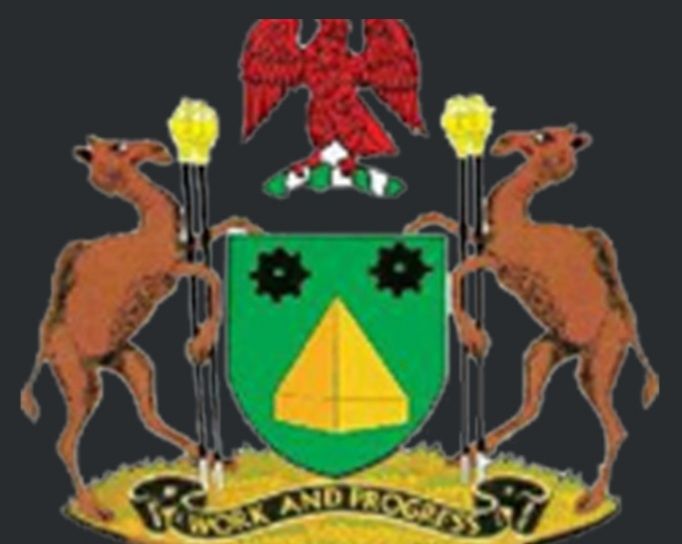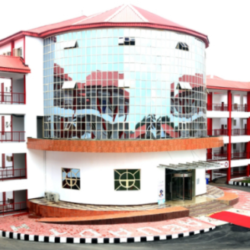The official symbol of Kano State comprises an eagle, 2 camels, staff, pyramid, 2 wheels, green vegetation and an inscription (motto): ‘Work and progress’. Each item on the symbol signifies one or more things.
Eagle
The eagle symbolizes strength.
Two camels
This symbolizes the camels used as mode of transportation in Kano in those days
Staff
The staff symbolizes power.
Pyramid
Refers to the pyramids of groundnut bags in Kano during the Nigeria’s pre independence agricultural boom
Two wheels
There are two chain wheels in the logo and they represent the industrial activity of the state.
Green vegetation
The two camels stand on a green vegetation.
The Kano vegetation is semi-arid savannah.
It is rich in floral and faunal resources, suitable for both livestock rearing and cereal farming.
Motto
Work and progress


Kano State
Kano State remains one of the most influential regions in Nigeria, combining a rich historical legacy with a bustling modern economy. Its agricultural wealth, cultural heritage, and strategic position as a trade center make it a cornerstone of northern Nigeria’s social and economic structure. With the right investments and policy focus, Kano has the potential to further its economic and developmental growth.
Kano State is situated in the northwestern part of Nigeria. It is bordered by the following states:
- Jigawa to the northeast
- Katsina to the northwest
- Kaduna to the southwest
- Bauchi to the southeast
The state’s capital is Kano City, which serves as a major commercial hub not just for Kano State, but for northern Nigeria and West Africa as a whole.
Topography and Climate:
- Kano lies within the Sahelian region, featuring semi-arid conditions.
- It experiences a tropical savannah climate with a distinct dry season (usually between November and April) and a wet season (from May to October).
History and Culture
Kano State has a rich historical background that dates back centuries. It has been a center of Islamic culture and scholarship in West Africa.
Pre-Colonial Era
- The area now known as Kano has been inhabited for millennia. By the 10th century, the Kano Emirate emerged, becoming an influential city-state.
- The Kano Chronicle, a written historical record, details the region’s rulers and significant events over several centuries.
Colonial Era
- Kano became part of the British protectorate in the early 20th century.
- The Kano Emirate continued to wield cultural influence even under British rule, and it remains an important institution to this day.
Cultural Heritage
- The state is predominantly populated by the Hausa ethnic group, with Islam being the major religion.
- Durbar Festival, a cultural display of horse riding, processions, and traditional attire, is one of the most famous events in Kano, showcasing the grandeur of the Kano Emirate.
Economy
Kano State has historically been one of Nigeria’s key economic centers, particularly due to its role as a commercial hub.
Agriculture
- Agriculture is the backbone of Kano’s economy, employing a large part of the population.
- Major crops include groundnuts (peanuts), millet, rice, cotton, and maize. The state is also known for its livestock farming.
Industries, commerce
- Kano was once famous for its groundnut pyramids, which symbolized Nigeria’s agricultural wealth.
- Textile production, tanning, and leather work are major industries in Kano. The state hosts several manufacturing facilities, making it one of the largest industrial centers in northern Nigeria.
- Kano City serves as a commercial hub for trade between Nigeria and other West African countries. The city’s markets, such as the famous Kantin Kwari Market, attract traders from across the region.
In recent years, Kano has diversified its economy to include mall and medium enterprises (SMEs) and services such as finance, transport, and communications.














